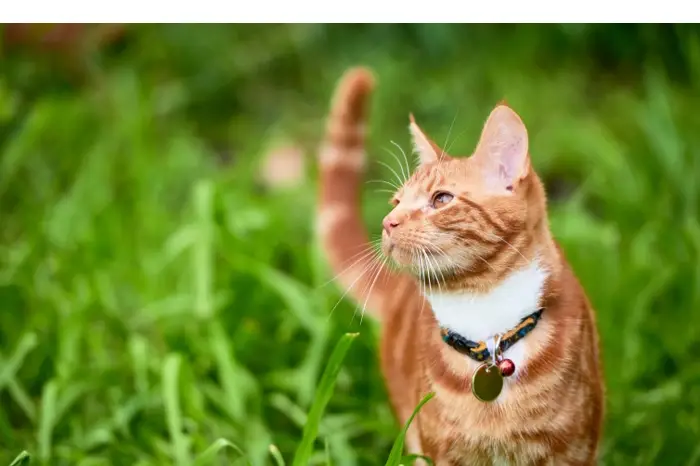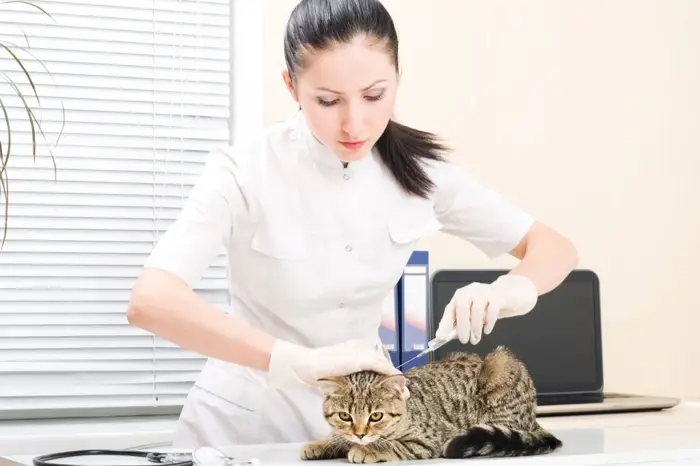Lost pets come home with Peeva.
Why Every Cat Owner Should Consider a Cat Chip Tracker
One of the most common concerns for cat owners is that their feline friends may wander or get lost. Enter the cat chip tracker – a modern solution to an age-old problem. This guide delves into the world of cat chip trackers, exploring why they are essential tools for cat owners. It’s worth mentioning that even with these advanced tracking technologies, the importance of microchipping your cat remains paramount, as it offers a permanent form of identification that can be crucial in reuniting lost pets with their owners.
What is a Cat Chip Tracker?
A cat chip tracker is a device designed to keep track of your cat’s whereabouts. It differs slightly from the traditional microchips, which are implanted under the cat’s skin and provide identification information when scanned with a specific device. A cat chip tracker, on the other hand, usually comes in the form of a collar or a tag that can be attached to the cat’s existing collar and uses GPS or other location-tracking technologies to provide real-time location data of your pet.
These trackers are designed to be lightweight and unobtrusive, ensuring they do not hinder the cat’s movement or cause any discomfort. With advancements in technology, many of these devices now offer additional features like geofencing, activity monitoring, and even health tracking, providing a comprehensive solution for pet owners to monitor and ensure the wellbeing of their feline friends.
However, it’s important to remember that while GPS trackers offer real-time location data, they cannot replace the security and universal recognition that a microchip like Peeva provides.
The Concept of a Traceable Cat

The idea of a traceable cat may seem intrusive to some, but the benefits it provides in urban and rural settings are undeniable. In urban areas, where traffic and human activity pose constant threats, being able to locate a lost cat quickly can be lifesaving. For cats in rural areas, where they might wander into woods or farmlands, a tracker can be invaluable in locating them in vast, open spaces.
Having a traceable cat not only provides peace of mind to the owner but also enhances the safety of the cat. It reduces the risk of cats getting lost and ending up in shelters or being exposed to dangerous situations. Furthermore, for cats that require regular medication or have specific health issues, being traceable ensures that they can be promptly located and attended to, should they stray.
Tracing a Cat: How Technology Helps
The technological advancements behind cat chip trackers have revolutionised the way pet owners can locate their lost pets. These devices use GPS (Global Positioning System) technology to provide real-time location data. Some models use Wi-Fi, cellular networks, or even Bluetooth to enhance tracking accuracy, especially in areas where GPS signals might be weak.
The process of tracing a cat with a chip tracker is straightforward. Once the tracker is attached to the cat, it starts transmitting location data to a linked mobile app or web interface. If the cat goes missing, the owner can quickly check the app to see the cat’s current location. Many trackers also provide the history of the cat’s movements, which can be useful in understanding their behaviour and identifying their favourite spots.
These technological solutions are not just limited to tracking; they also offer insights into the cat’s activity patterns. This can be particularly useful for monitoring the health and wellbeing of the cat, ensuring they are getting enough exercise and are not venturing into potentially dangerous areas.
Track a Microchipped Cat: The Process
Many cat owners might be under the impression that a standard microchip can track the location of their pet. However, this is a common misconception. Traditional microchips implanted in cats are passive RFID (Radio Frequency Identification) devices that do not have GPS tracking capabilities. They only store a unique ID number, which can be read by a scanner at a vet’s clinic or animal shelter, linking to the owner’s contact information in a database.
To actively track a microchipped cat, a GPS cat chip tracker, which is a separate device, must be used. This tracker can either be integrated into a collar or attached as a tag to the cat’s existing collar. The GPS tracker works by using satellite technology to send real-time location data to an app on the owner’s smartphone or computer. This allows the owner to see the exact location of their cat at any given time, which is particularly useful if the cat goes missing or strays away from home.
GPS Tracker for Cats Chip: Features and Benefits
The features and benefits of GPS trackers for cats are manifold, making them an invaluable tool for pet owners:
Real-Time Location Tracking:
The most significant advantage of a GPS tracker is its ability to provide real-time location updates, enabling owners to quickly find their cats if they wander off.
Geofencing:
Many trackers offer a geofencing feature, where owners can set safe zones (like home or garden). If the cat leaves these areas, the owner receives an alert.
Activity Monitoring:
Some trackers also monitor the cat’s activity levels, sleep patterns, and calories burned, which can be crucial for tracking the health and wellbeing of the pet.
Durability and Waterproofing:
Given the adventurous nature of cats, most GPS trackers are designed to be robust and waterproof, ensuring they withstand various environments.
Long Battery Life:
To minimise frequent charging, these trackers are equipped with batteries that can last several days on a single charge.
Compact and Lightweight Design:
Considering the size and comfort of cats, trackers are made compact and lightweight, not to hinder the cat’s movements.

Choosing the Right Cat Chip Tracker
Selecting the right GPS tracker for your cat involves considering several factors to ensure it suits your and your pet’s needs:
Size and Weight:
Ensure the tracker is small and light enough not to bother your cat. A bulky tracker can be uncomfortable and may be resisted by the cat.
Battery Life:
Look for a tracker with a long battery life to avoid frequent recharges, especially if your cat spends a lot of time outdoors.
Range and Accuracy:
Consider the tracking range and accuracy, especially if you live in an area with a weak GPS signal or dense cover.
Water Resistance:
Since cats can often find themselves in wet conditions, a water-resistant tracker is a must.
User-Friendly Interface:
The accompanying app or web interface should be user-friendly, allowing you to easily monitor your cat’s location and activity.
Subscription Fees:
Some GPS trackers require a monthly subscription fee for data services. Consider the ongoing costs when choosing a tracker.
Maintenance and Considerations for Cat Chip Trackers
Regular Battery Checks and Charging:
One of the most important aspects of maintaining a GPS tracker is keeping its battery charged. Regularly check the battery level through the associated app and establish a charging routine that suits your cat’s lifestyle and the tracker’s battery life.
Durability and Waterproofing Maintenance:
While most cat chip trackers are designed to be durable and water-resistant, it’s advisable to periodically inspect the device for any wear and tear or water damage, especially if your cat is particularly active or enjoys exploring outdoors.
Comfort and Fit for the Cat:
Regularly check the fit of the tracker on your cat’s collar. It should be secure enough not to fall off, but not so tight as to cause discomfort. Also, observe your cat’s behaviour for any signs of discomfort or irritation from the tracker.
Firmware and Software Updates:
Keep the tracker’s software or firmware updated. Manufacturers often release updates that improve the functionality, accuracy, or battery life of the device.
Understanding the Limitations:
It’s crucial to understand that GPS trackers have limitations, such as signal loss in certain areas or limited battery life. Knowing these can help set realistic expectations and backup plans in case of technology failures.
Dealing with Lost Trackers:
In the event that the tracker is lost or damaged, knowing the manufacturer’s policy on replacements or repairs can be helpful. Some companies offer warranties or replacement programs.
Conclusion: Secure Your Feline Friend with a Cat Chip Tracker
In summary, a cat chip tracker is an invaluable tool for any cat owner, offering not just peace of mind but also a practical solution to keep tabs on your adventurous feline. Whether you have an indoor cat that occasionally ventures out or an outdoor cat with a wandering spirit, a GPS tracker can be a game-changer in ensuring their safety.
So, consider equipping your cat with a chip tracker. It’s a small investment in their safety and your peace of mind. Remember, while technology can’t replace vigilant pet ownership, it certainly enhances our ability to safeguard our beloved pets. Embrace this modern solution and enjoy the added assurance it brings to you and your whiskered companion.
Peeva: Where Lost Pets Find Their Way Home
Transform your pet’s microchip into a lifeline. 24/7 phone support and lost pet alerts ensure your pet gets the help they need, when they need it.






